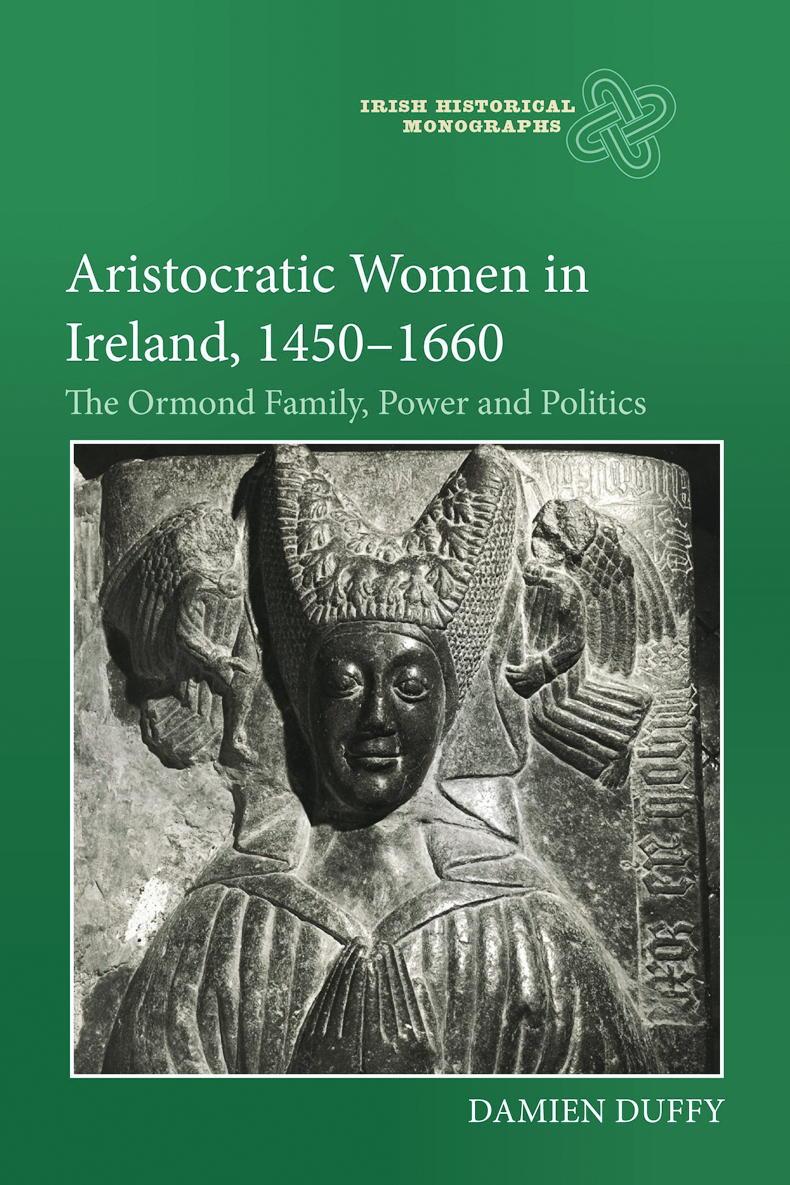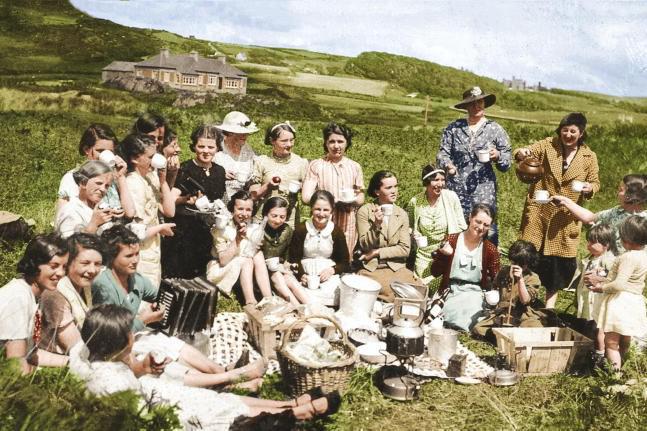At Christmas 1602, Elizabeth Butler’s maternal grandmother, the dowager Lady Douglas Sheffield summoned her to court.
To the satisfaction of all concerned, especially the earl of Ormond (her father), her appearance was favourably received.
It was remarked how the Lady Elizabeth “hath the queen and all the great ladies and lords in court on her part” with Elizabeth recognised as “a courtier naturally, even if it was by birth”.
Back in Ireland, by the end of January 1603, Theobald Butler (Elizabeth’s cousin) was en route to London where he was to be “interviewed” by the queen. By 22 January she had consented to their marriage, much to the relief and satisfaction of the 72-year-old earl.
After their marriage, the couple became Lord and Lady Tulleophelim (or Lord and Lady Tully). Despite the earl’s careful planning and strategic political manoeuvres to secure the succession, he greatly distrusted Theobald and sought to curtail his independence and influence.
He even insisted that the couple live with him at his castle in Carrick-on-Suir, in order to prevent them from establishing their own household.
Ormond also obtained official confirmation of his power to disinherit Theobald if the need arose. Not surprisingly, Lady Tully’s relationship with her husband and father deteriorated. In August 1613 King James VI and I was compelled to intervene when Ormond expelled Tully from Carrick Castle. Ormond’s expectation that the couple should live on a meagre £500 per annum was a further source of serious tension.
By the end of that year, Lady Tully was thrust into the centre of the second succession crisis in the earldom in 99 years, when her husband died after a brief illness during Christmas week 1613. Then aged 28, she was left childless, at her father’s mercy and, in a state of great uncertainty.
Following her husband’s death Elizabeth was in a vulnerable position. She was immediately denied the Ormond title, as her cousin Sir Walter Butler of Kilcash, the nearest male relative, stood not only to inherit the entire earldom of Ormond, but also the Tully lands.
She also inherited heavy financial burdens since, although her father had settled a fixed amount of money for her annually, she could not access this until after his death. To compound her problems, her husband left her burdened with substantial debt, with a result that her one-third widow’s portion of the Tully Estate was virtually worthless.
To add to Elizabeth’s woes, Thomas Butler, the illegitimate brother of her husband, saw her vulnerability as a potential opportunity for him to make a strike against “the injustice of his illegitimacy”.
In an effort to defend her property, Elizabeth entreated with her elderly mother-in-law, Lady Eustace, to help her by taking care of Cloghrenan Castle while she fled to Carrick Castle to plead with her own father for help (Elizabeth left particular instructions with Lady Eustace to place watchmen on the castle walls day and night and warned her to be especially vigilant of nocturnal visitors).
However, the efforts of both women were futile as in a matter of weeks, Elizabeth’s brother-in-law, Thomas Butler, had occupied the two principal manors set aside for Elizabeth during her widowhood, Tulleophelim and Cloghrenan.
Furthermore, Elizabeth’s fraught visit to her father confirmed her worst fears when the old earl ordered his daughter to hand over to Walter Butler, her cousin and his future heir, the “Red book [of Ormond] and all other writings which concern me and my house”.
Having done so within a matter of days, Elizabeth was once again summoned by her father to Carrick so that he might inform her about the final settlement of the Ormond patrimony. 
No further grants of lands or security were provided for his widowed daughter. The meeting between father and daughter resulted in Ormond revisiting his will on 16 January 1614. Lord Tully was barely a fortnight dead.
*Dr Damien Duffy is the author of Aristocratic Women in Ireland, 1450-1660. The book examines the lives of women born or married into the influential Ormond family and the impact or influence they had on the dynasty. This story is an excerpt from the book, which is available for online purchase at boydellandbrewer.com. The code BB977 will give a 40% discount from 2 December.
Read more
Tales from the Parish: St Dahalin, early Irish saint and miracle worker
Tales from the Parish: South Presentation Convent
At Christmas 1602, Elizabeth Butler’s maternal grandmother, the dowager Lady Douglas Sheffield summoned her to court.
To the satisfaction of all concerned, especially the earl of Ormond (her father), her appearance was favourably received.
It was remarked how the Lady Elizabeth “hath the queen and all the great ladies and lords in court on her part” with Elizabeth recognised as “a courtier naturally, even if it was by birth”.
Back in Ireland, by the end of January 1603, Theobald Butler (Elizabeth’s cousin) was en route to London where he was to be “interviewed” by the queen. By 22 January she had consented to their marriage, much to the relief and satisfaction of the 72-year-old earl.
After their marriage, the couple became Lord and Lady Tulleophelim (or Lord and Lady Tully). Despite the earl’s careful planning and strategic political manoeuvres to secure the succession, he greatly distrusted Theobald and sought to curtail his independence and influence.
He even insisted that the couple live with him at his castle in Carrick-on-Suir, in order to prevent them from establishing their own household.
Ormond also obtained official confirmation of his power to disinherit Theobald if the need arose. Not surprisingly, Lady Tully’s relationship with her husband and father deteriorated. In August 1613 King James VI and I was compelled to intervene when Ormond expelled Tully from Carrick Castle. Ormond’s expectation that the couple should live on a meagre £500 per annum was a further source of serious tension.
By the end of that year, Lady Tully was thrust into the centre of the second succession crisis in the earldom in 99 years, when her husband died after a brief illness during Christmas week 1613. Then aged 28, she was left childless, at her father’s mercy and, in a state of great uncertainty.
Following her husband’s death Elizabeth was in a vulnerable position. She was immediately denied the Ormond title, as her cousin Sir Walter Butler of Kilcash, the nearest male relative, stood not only to inherit the entire earldom of Ormond, but also the Tully lands.
She also inherited heavy financial burdens since, although her father had settled a fixed amount of money for her annually, she could not access this until after his death. To compound her problems, her husband left her burdened with substantial debt, with a result that her one-third widow’s portion of the Tully Estate was virtually worthless.
To add to Elizabeth’s woes, Thomas Butler, the illegitimate brother of her husband, saw her vulnerability as a potential opportunity for him to make a strike against “the injustice of his illegitimacy”.
In an effort to defend her property, Elizabeth entreated with her elderly mother-in-law, Lady Eustace, to help her by taking care of Cloghrenan Castle while she fled to Carrick Castle to plead with her own father for help (Elizabeth left particular instructions with Lady Eustace to place watchmen on the castle walls day and night and warned her to be especially vigilant of nocturnal visitors).
However, the efforts of both women were futile as in a matter of weeks, Elizabeth’s brother-in-law, Thomas Butler, had occupied the two principal manors set aside for Elizabeth during her widowhood, Tulleophelim and Cloghrenan.
Furthermore, Elizabeth’s fraught visit to her father confirmed her worst fears when the old earl ordered his daughter to hand over to Walter Butler, her cousin and his future heir, the “Red book [of Ormond] and all other writings which concern me and my house”.
Having done so within a matter of days, Elizabeth was once again summoned by her father to Carrick so that he might inform her about the final settlement of the Ormond patrimony. 
No further grants of lands or security were provided for his widowed daughter. The meeting between father and daughter resulted in Ormond revisiting his will on 16 January 1614. Lord Tully was barely a fortnight dead.
*Dr Damien Duffy is the author of Aristocratic Women in Ireland, 1450-1660. The book examines the lives of women born or married into the influential Ormond family and the impact or influence they had on the dynasty. This story is an excerpt from the book, which is available for online purchase at boydellandbrewer.com. The code BB977 will give a 40% discount from 2 December.
Read more
Tales from the Parish: St Dahalin, early Irish saint and miracle worker
Tales from the Parish: South Presentation Convent









SHARING OPTIONS